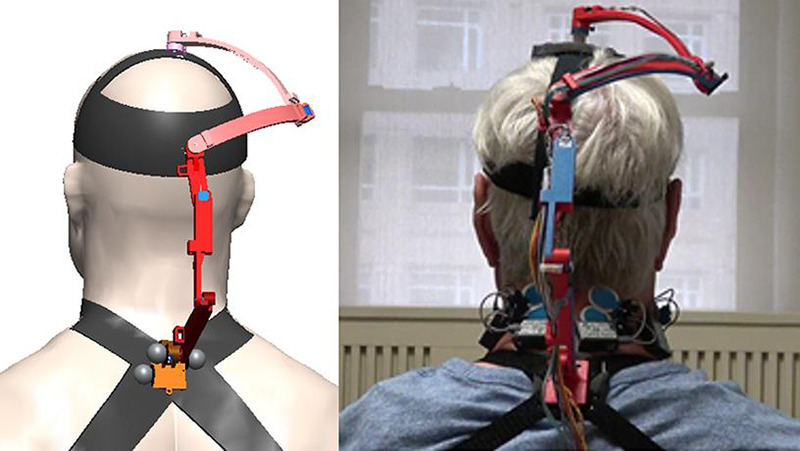
Researchers at Columbia University School of Engineering and Applied Science have developed a new robotic neck brace that may help doctors analyze the impact of cancer treatments on the neck mobility of patients and guide their recovery.
Read more SynPhNe Wearable Trains Brain And Muscle As One System, Helps With Stroke Rehabilitation
Head and neck cancer was the seventh most common cancer worldwide in 2018, with 890,000 new cases and 450,000 deaths, accounting for 3% of all cancers and more than 1.5% of all cancer deaths in the United States. Such cancer can spread to lymph nodes in the neck, as well as other organs in the body. Surgically removing lymph nodes in the neck can help doctors investigate the risk of spread, but may result in pain and stiffness in the shoulders and neck for years afterward.
Identifying which patients may have issues with neck movement “can be difficult, as the findings are often subtle and challenging to quantify,” said Scott Troob, assistant professor of otolaryngology – head and neck surgery and division chief of facial plastic and reconstructive surgery at Columbia University Irving Medical Center. However, successfully targeting what difficulties they might have with mobility can help patients benefit from targeted physical therapy interventions, he explained.
The current techniques and tools that doctors have to judge the range of motion a patient may have lost in their neck and shoulders are somewhat crude, explained Sunil K. Agrawal, a professor of mechanical engineering and rehabilitative and regenerative medicine and director of the ROAR (Robotics and Rehabilitation) Laboratory at Columbia Engineering. They usually either provide unreliable measurements or require too much time and space to set up for use in routine clinical visits, reports Columbia University.
To develop a more reliable and portable tool to analyze neck mobility, Agrawal and his colleagues drew inspiration from a robotic neck brace they previously developed to analyze head and neck motions in patients with amyotrophic lateral sclerosis (ALS). In partnership with Troob’s group, they have now designed a new wearable robotic neck brace. Their study appears July 12 in the journal Wearable Technologies.
The new brace was made using 3D-printed materials and inexpensive sensors. The easy-to-wear device was based on the head and neck movements of 10 healthy individuals.
“This is the first study of this kind where a wearable robotic neck brace has been designed to characterize the full head and neck range of motion,” Agrawal said.

In the new study, the researchers used the prototype brace, along with electrical measurements of muscle activity, to compare the neck mobility of five cancer patients before and one month after surgical removal of neck lymph nodes. They found their device could precisely detect changes in patient neck movements during routine clinical visits.
“Use of the sensing neck brace allows a surgeon to screen patients postoperatively for movement difficulty, quantify their degree of impairment, and select patients for physical therapy and rehabilitation,” Troob said.
“Patients consistently identify need for rehabilitation and guided exercises after surgery as an unmet need in their medical care,” Troob said. “This work will lay the foundation for the appropriate identification of patients for intervention. We additionally hope that through using the neck brace, we will be able to objectively quantify their improvement and develop evidence-based rehabilitative programs.”
In the future, the researchers hope to investigate larger groups of patients and use the neck brace to follow patients through physical therapy to develop evidence-based protocols for rehabilitation, Troob said. They also would like to develop similar braces for other surgical sites, such as the forearm, ankle, or knee, he added.











